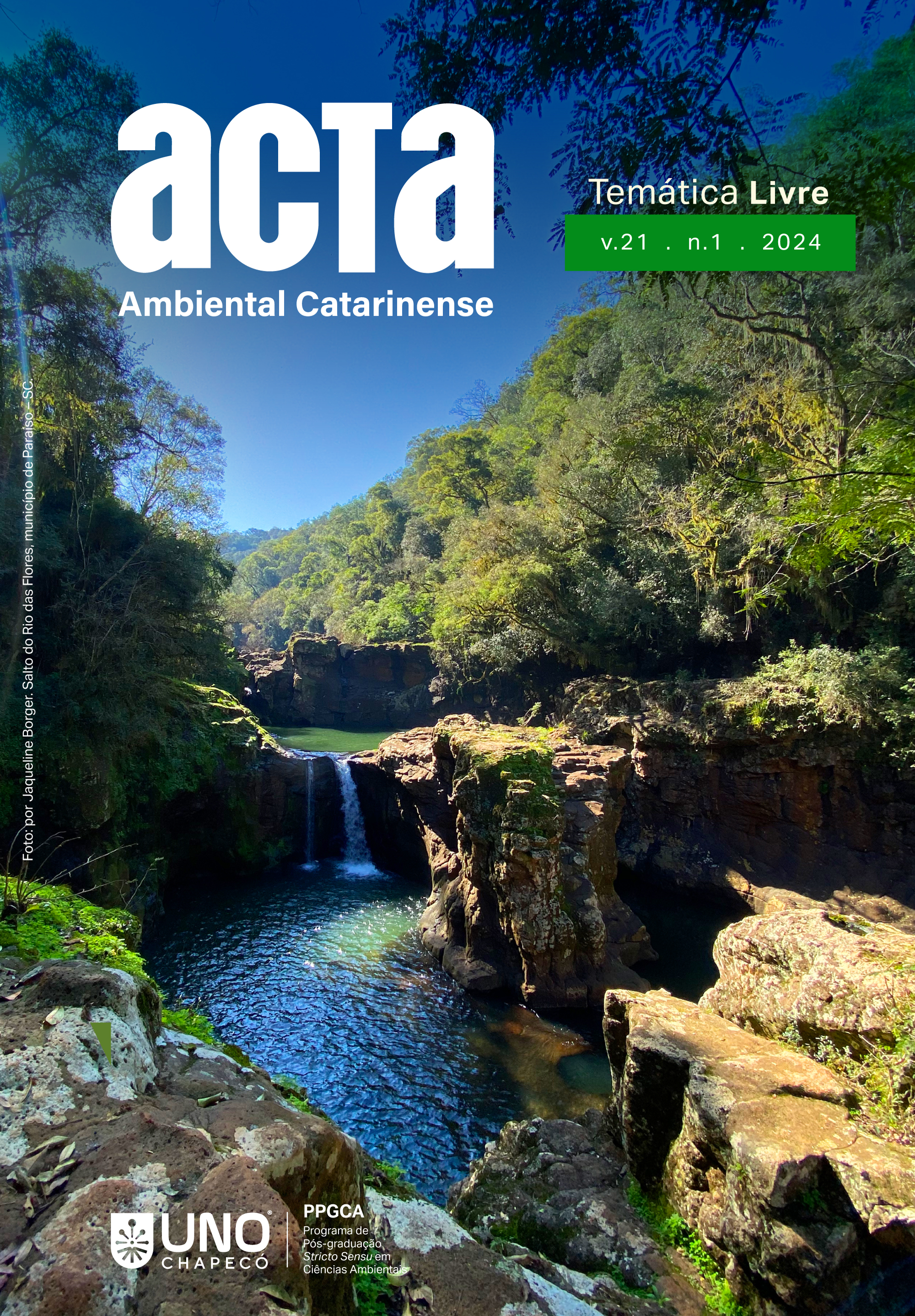FOREST SYSTEMS, SOIL FAUNA, AND SOIL FEATURES: HOW FIELD MANAGEMENT CHANGE THIS RELATIONSHIP?
DOI:
https://doi.org/10.24021/raac.v21i1.7306Palavras-chave:
Soil quality. Forest management. Soil invertebrates. Multivariate analysis.Resumo
The objective of this study was to identify differences in land use systems and forest management on the diversity of soil fauna and Collembola eco-morphotypes, and their relationship with physical-chemical attributes of the soil. Sampling was carried out in Native Forest (NF), Araucaria Reforestation (AR) and Eucalyptus (ER). In all, 19 taxonomic groups were identified, of which Formicidae and Collembola were the most abundant, in addition to 21 morphotypes of springtail. For TSBF, AR presented the highest abundance and NF the highest values of wealth and diversity of groups. Potassium and magnesium contents, total porosity, pore volume, penetration resistance (Rpen), organic matter, and pH were the environmental variables that contributed to explain the distribution of the soil fauna. In pitfalls traps, ER showed the greatest abundance, NF the greatest richness and AR the greatest diversity. Rpen and soil moisture contributed to explain the distribution of soil fauna. NF provided greater abundance, diversity, and richness of Collembola eco-morphotypes and biopores, macropores, clay, manganese and copper levels affected the community structure. Different forest systems affect the structure of the soil community, showing improvement in biological indicators in the Native Forest areas, Araucaria, and Eucalyptus Reforestation, under the influence of physical and chemical attributes.
Downloads
Downloads
Publicado
Edição
Seção
Licença
Copyright (c) 2024 Revista Acta Ambiental Catarinense

Este trabalho está licenciado sob uma licença Creative Commons Attribution-NonCommercial-NoDerivatives 4.0 International License.
Estou ciente de que, em sendo aprovado, a publicação do artigo será no formato on-line no Portal de Periódicos da Unochapecó.Também tenho ciência de que há autorização para assumir contratos adicionais separadamente, para distribuição não-exclusiva da versão do trabalho publicada nesta revista (ex.: publicar em repositório institucional ou como capítulo de livro), com reconhecimento de autoria e publicação inicial nesta revista.
















